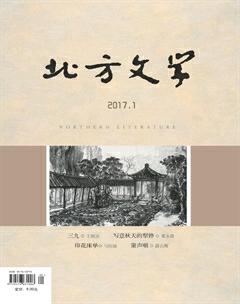植物學術語從英語到中文和再翻譯到其他語言時存在的一些問題和思考
巴桑拉毛
摘要:術語翻譯一直是翻譯界最具挑戰(zhàn)之一的工作。動植物的中文學名多數是從拉丁語轉寫和翻譯而來,多數是基于漢語語境和中文的詞匯特征而重新被命名和翻譯的。這些術語在源語拉丁文里是根據植物的科學習性特征和棲息地、科和屬而命名。中文里也有劃分科和屬,中文翻譯是根據中文文化和習慣加上修辭,符合中文閱讀者習慣。但是這些術語再從中文或英語翻譯到其他語言是需要過濾和分析譯入語和源語言的語法構詞特征。由于沒有注意到不同語言的特征,也可能歸結于翻譯者的英語水平有限,翻譯錯誤也是屢見不鮮。這也是術語為主多語翻譯者需要注意的因素。
關鍵詞:術語翻譯;功能翻譯理論;多語翻譯;植物學
General methods used in translating ecology terminologies:
Terminologies are unlike common vocabularies used in literature, they are words with special meanings in certain subject such as ecology, biology and chemistry. Therefore, when translate terminologies, its significant to translate the core meaning rather than the transition of style or emotions that are emphasized in literature translation.
Functionalist approaches include Hans J. Vermeers Skpostheorie, intentional interaction that focuses on purposeful translation between source-text and target language. Therefore, these methods were used in translation of technology or science text. Original names of plant species were mostly in English, formed up in Latin language, their lexical formation is based on the plants function, size, colors and division of family and category. For instance, plant Canna (an indigenous American plant) is translate into Chinese as “美人蕉”, “蕉” carries the core meaning of the plant as Canna belongs to banana family,yet “美人”is added in accordance with its shape to make the translation more lively. This method is due to rhetoric characteristics of Chinese language. Therefore, in Chinese language, the receivers could understand the meaning that Canna is a banana type plant with beautiful shape. It has functionally translated that Canna is a plant belongs to the banana family.
However, in the original word Canna, there is no such suffix as “ 美人”. Which would destruct to translate the word into another language of different grammatical principles.
In the functionalist theory, Vermeer emphasizes that role of the translator is crucial in the translation process. The translator is ostensibly the expert in translational action and should be responsible both for carrying out the commissioned task and for ensuring the result of the translation process, even when aspects like formatting and layout are assigned to other agents. (Cf. Vermeer 1989b: 174) Therefore, when such plant terminologies translated into other languages which is not common to use rhetoric, it is very dangerous to destruct the original meaning as the language would sense “美人”is more important in meaning than “蕉”. As every language has its own grammatical rules, the target language would name a plant like the Latin, the core part is its function, for suffix, it prefers to put its color, size or the habitat characteristics rather than rhetoric sensible and suitable to the target language receivers.
Some translation mistakes:
In such cases, I found many translation mistakes, as Canna is translated as “beautiful tree” in a language that lexical formation of plant terminology is prioritized on its function, and suffix is usually the shape or habitat background. Another example, Rhodiola 紅景天, The name combines the Greek rhodon, meaning rose and referring to the rose-like smell of the roots, with the Latin diminutive suffix -iola. It is translated to Chinese as 紅景天,this is actually not a translation, but the Chinese name was given based on its shape, color, again with rhetoric. Another example could be Tulip, originated from Latin or Persian language with a translation mistake. It is translated into Chinese as郁金香,based upon its shape and function in Chinese context.
Factors to concern in the third and fourth target language.
Therefore, when we translate such terminologies from specific subject, it is important to refer to the original lexical formation of the word. Also, a translator has to refer and analyze the translation in Chinese before translate the words into another different language. As the functionalist say, it is important for the translator to always focus on the original meaning of a terminology in the specific subject while considering the context and receivers background of the target language. To translate such terminologies, a translator has to refer both to the source language and target language in order to translate them well into the third or fourth language.

